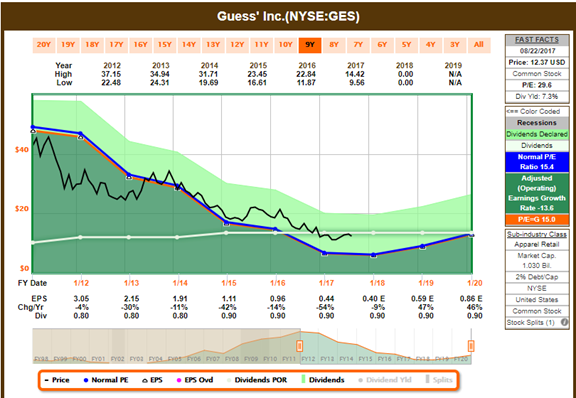There is a repeating dynamic in US equity markets. It represents an opportunity for investors.
Meanwhile – inside the ETF – each member is bought or sold, whether or not it fits the current story!
An Example
A current theme, based upon the success of Amazon (AMZN), is that “retail is dead.” The retail SPDR (XRT) shows how this has played out over recent weeks.

The emphasis on ETF trading takes the simple theme and applies it to all companies in the ETF – whether or not that is appropriate.
Here are two companies where ETFs hold 8-10% of the stock – Williams Sonoma (WSM) and Guess (GES). Here are the F.A.S.T. Graph summaries for each.

WSM has a nice dividend, no debt, and a reasonable multiple. It also has an anti-AMZN online and value component as part of the business. It is not just like the other retail ETF members – even if one gives credence to the basic theme.

GES is rather expensive on a PEG ratio, but it does have a great dividend and almost no debt. It is easy to see why some would find it attractive, and unlike other retailers.
Investment Implications
Any stock’s return is a combination of the overall market, the sector, and the company’s results. For investors who analyze the fundamentals of the company, exclusively trading ETFs misses out on an important potential source of edge.
The examples cited above both beat earnings estimates today and will probably have nice gains tomorrow. It can pay handsomely to focus on individual companies rather than (or in addition to) broader sector or market themes.













Leave A Comment